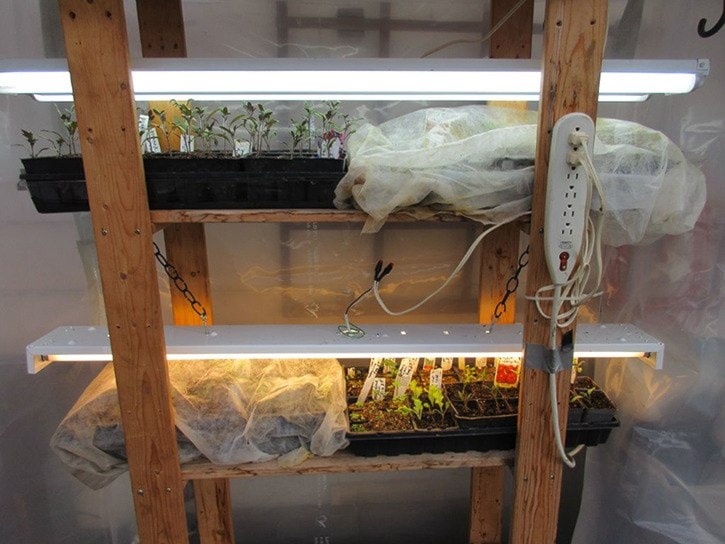First, a correction. In my last column I should have said to add one full recipe (six quarts) of Solomon’s Complete Organic Fertilizer — not one quart — to each 100 square feet of garden bed to start off with each spring.
Because our soils are so wet and cold from winter, they don’t warm up quickly and need a lot of nitrogen to get plants off to a good start. Solomon’s recipe contains plenty of nitrogen.
This week I’ll be sowing my next batch of seeds into pots, including broccoli, cabbage, cauliflower, celery, fennel, lettuce, parsley and parsnips.
I’ve organized my jars of seed packets so that every two weeks until October, I’m sowing something. Many of these seeds would sprout outside but I’ve found that slugs and sow bugs chomp them down as soon as they appear.
If they start in pots and get planted out in the garden once they grow bigger and sturdy they stand a better chance of thriving. By then the soil is warmer and dryer, and if I fertilize them well they should grow fast.
Growing vegetables quickly ensures an earlier harvest and larger produce, but mainly allows them to outgrow predation by evil creeping, crawly, ravenous creatures. The secret is to bring the minerals in your soil into balance, add some compost and use a lot of organic fertilizer.
Once this has been dug into the top six inches or so, dig a hole for the transplant, pop in more fertilizer and dig that into the bottom. Fill the hole with water and plant the transplant there in the slurry, pushing back the soil around it. Different vegetables require more or less fertilizer, but as a general rule of thumb, one-quarter cup per plant is a good average amount.
About once a month I like to side-dress the vegetables with more fertilizer since our sandy soil doesn’t hold nutrients well. I sprinkle it along the sides of each row, scratching it in a bit with a hoe and watering it in. Soil biota will do the rest of the work.
If you have an asparagus bed or have overwintered garlic, now is a good time to side-dress with fertilizer and compost. In my sandy soil I’ll use six quarts per 100 square feet and cover the bed with a half-inch thick layer of compost. Here’s another trick to get an early asparagus harvest: cover half the bed with plastic and it will warm up faster. Leave the other half bare and you’ll extend the harvest.
I have mentioned that it helps to wrap strips of sandpaper around the legs of your seed table, but slugs and their legion of allies have somehow climbed mine. Perhaps they have learned to rappel, or hang glide. I have compensated by covering each flat of seedlings with remay, which seems to be working.
Sometimes I wonder what God was thinking. Surely the predators who eat our lovely vegetables should taste better than they do. There’s a challenge for the scientists: can they genetically modify slugs to taste like chocolate?
